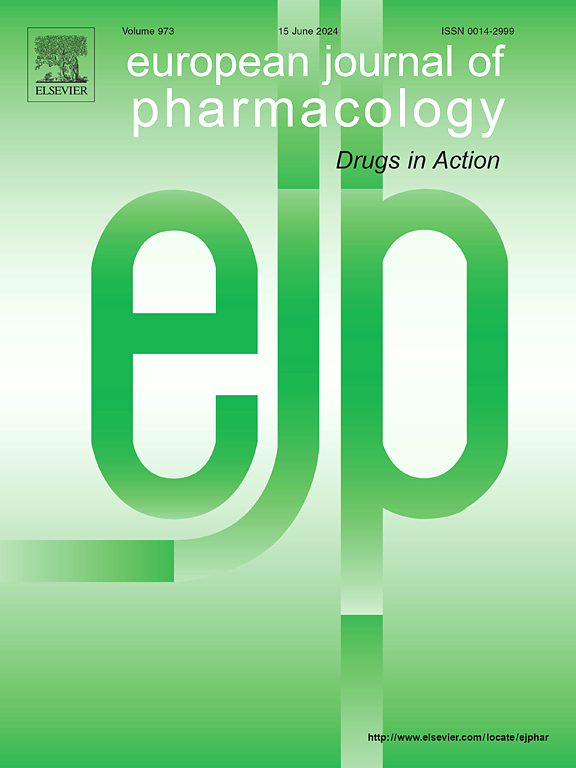Drug-related visual blurring: findings from the U.S. Food and Drug Administration Adverse Event Reporting System database
IF 4.2
3区 医学
Q1 PHARMACOLOGY & PHARMACY
引用次数: 0
Abstract
Background
Visual blurring is one of the most common symptoms in ophthalmology, and one of the important causes of secondary visual blurring is drug-related. This study assesses the risk of drug-related visual blurring using a large real-world database.
Methods
We analyzed adverse event reports from the U.S. Food and Drug Administration Adverse Event Reporting System (FAERS) database between January 2004 and September 2024. Disproportionality analysis algorithm were used. Drugs related with positive signals for visual blurring were categorized, and the risk levels, number of reports, and drug-induced onset times were quantified.
Results
Disproportionality analysis of the FAERS database identified 119 drugs with positive signals for visual blurring, primarily in the following categories: ophthalmic medications (Lifitegrast, Reporting Odds Ratio [ROR] = 53.24; 95 % Confidence Interval [CI]: 49.19–57.61), endocrine medications (Semaglutide, ROR = 3.26 [2.84–3.75]), nervous system medications (Pregabalin, ROR = 4.15 [3.93–4.37]), oncology medications (Encorafenib, ROR = 5.38 [4.37–6.62]), antimuscarinic medications (Fesoterodine, ROR = 6.77 [5.08–9.03]), and other medications (Dupilumab, ROR = 8.39 [8.16–8.64]). The top three drugs associated with the highest incidence of blurred vision as an adverse event are lifitegrast, oxymetazoline, and olopatadine. Antimuscarinic Medications had the shortest drug-induced onset time. Women (63.87 %) and middle-aged to elderly individuals [Age (mean ± standard deviation): 53.59 ± 18.79] were the main populations affected by drug-related visual blurring.
Conclusion
Preventing drug-related vision issues is vital. Early risk assessment and intervention with personalized medication can reduce side effects, ensure safety, and improve quality of life.
与药物相关的视觉模糊:来自美国食品和药物管理局不良事件报告系统数据库的发现。
背景:视力模糊是眼科最常见的症状之一,而继发性视力模糊的重要原因之一与药物有关。本研究使用一个大型真实世界数据库评估与药物相关的视觉模糊的风险。方法:分析2004年1月至2024年9月美国食品药品监督管理局不良事件报告系统(FAERS)数据库中的不良事件报告。歧化分析算法。对与视觉模糊阳性信号相关的药物进行分类,并对风险水平、报告数量和药物引起的发病时间进行量化。结果:FAERS数据库的歧化分析鉴定出119种具有视觉模糊阳性信号的药物,主要集中在以下类别:眼科药物(Lifitegrast,报告优势比[ROR] = 53.24;95%可信区间[CI]: 49.19-57.61)、内分泌药物(Semaglutide, ROR = 3.26[2.84-3.75])、神经系统药物(Pregabalin, ROR = 4.15[3.93-4.37])、肿瘤药物(Encorafenib, ROR = 5.38[4.37-6.62])、抗uscaric药物(Fesoterodine, ROR = 6.77[5.08-9.03])和其他药物(Dupilumab, ROR = 8.39[8.16-8.64])。视力模糊作为不良事件发生率最高的前三种药物是利替格司特、羟甲基唑啉和奥洛他定。抗毒蕈碱类药物的起效时间最短。女性(63.87%)和中老年人[年龄(平均值±标准差):53.59±18.79]是影响药物相关性视力模糊的主要人群。结论:预防药物相关性视力问题至关重要。早期风险评估和个性化用药干预可以减少副作用,确保安全,提高生活质量。
本文章由计算机程序翻译,如有差异,请以英文原文为准。
求助全文
约1分钟内获得全文
求助全文
来源期刊
CiteScore
9.00
自引率
0.00%
发文量
572
审稿时长
34 days
期刊介绍:
The European Journal of Pharmacology publishes research papers covering all aspects of experimental pharmacology with focus on the mechanism of action of structurally identified compounds affecting biological systems.
The scope includes:
Behavioural pharmacology
Neuropharmacology and analgesia
Cardiovascular pharmacology
Pulmonary, gastrointestinal and urogenital pharmacology
Endocrine pharmacology
Immunopharmacology and inflammation
Molecular and cellular pharmacology
Regenerative pharmacology
Biologicals and biotherapeutics
Translational pharmacology
Nutriceutical pharmacology.

 求助内容:
求助内容: 应助结果提醒方式:
应助结果提醒方式:


